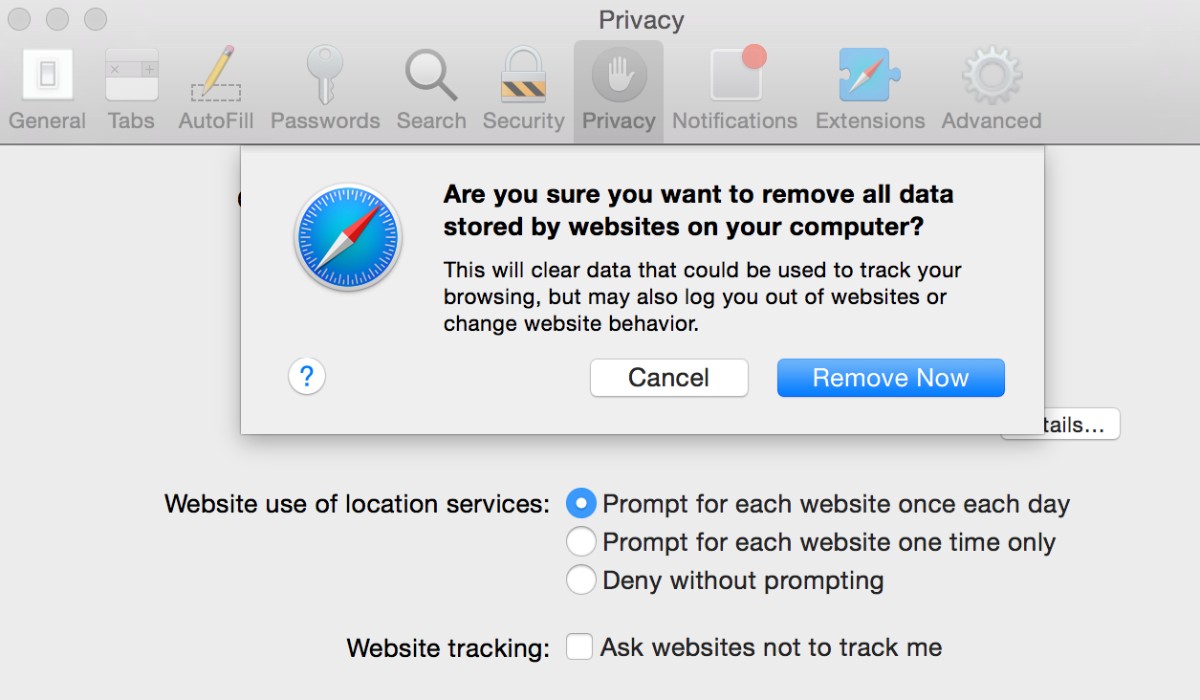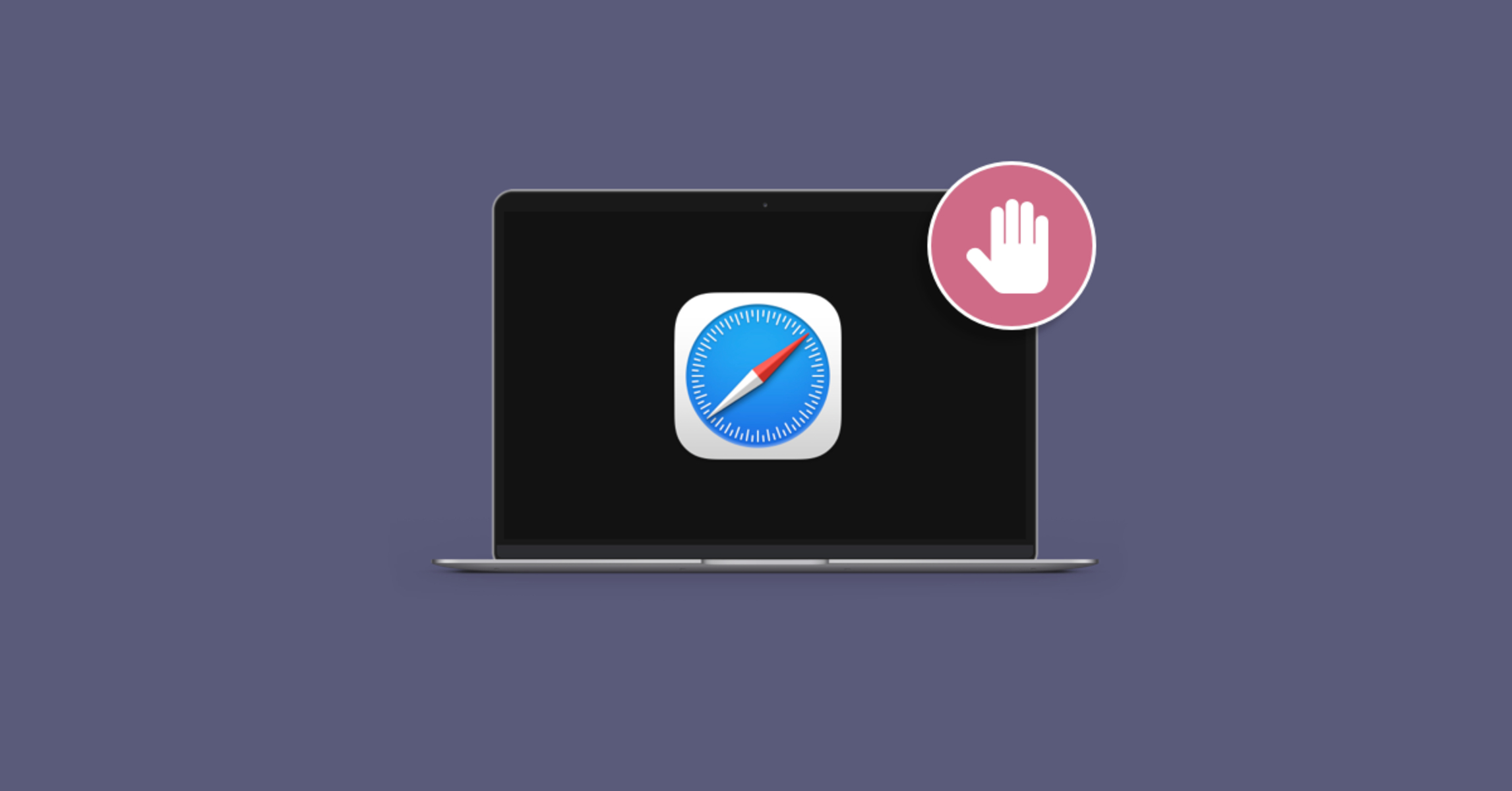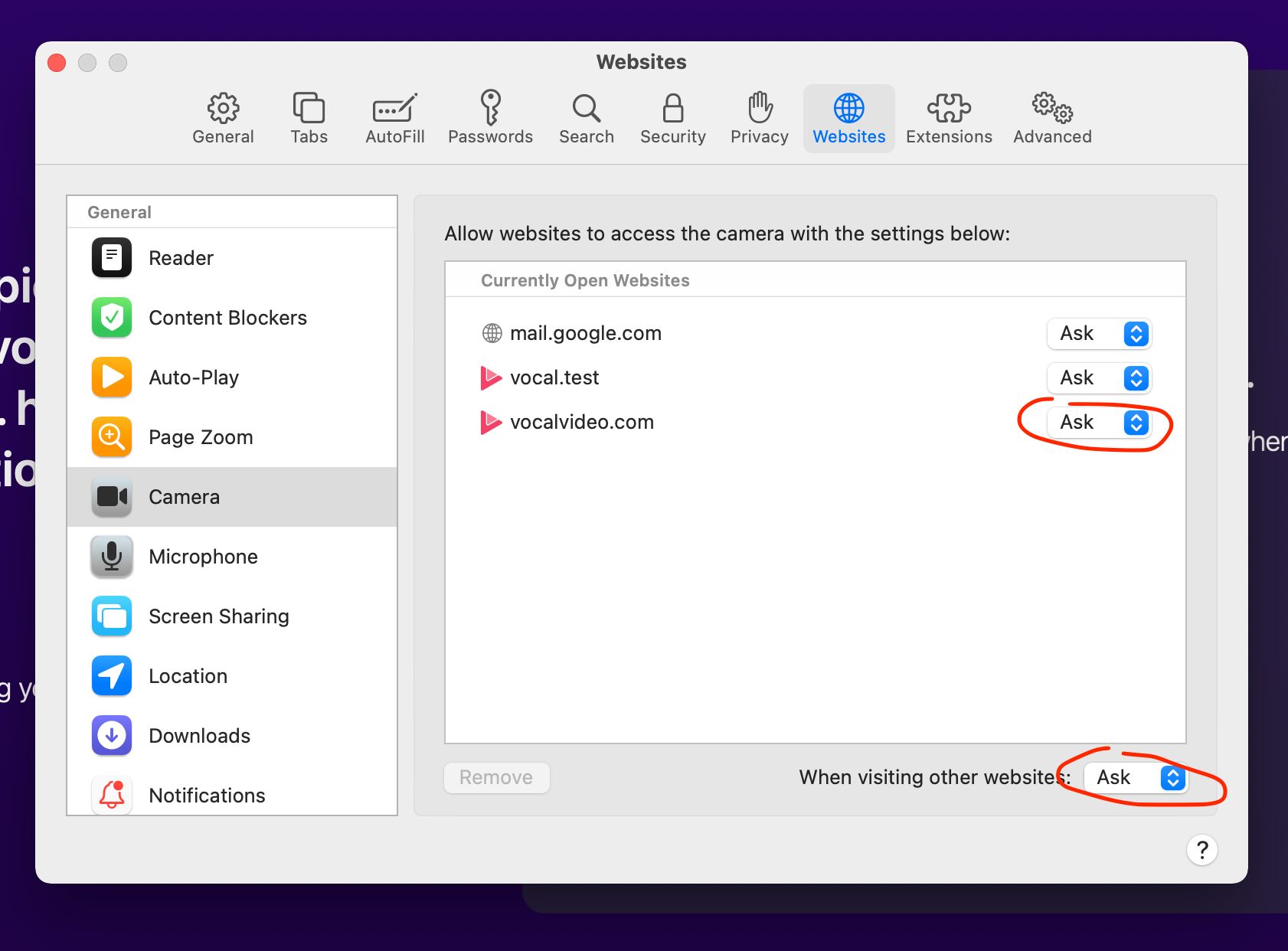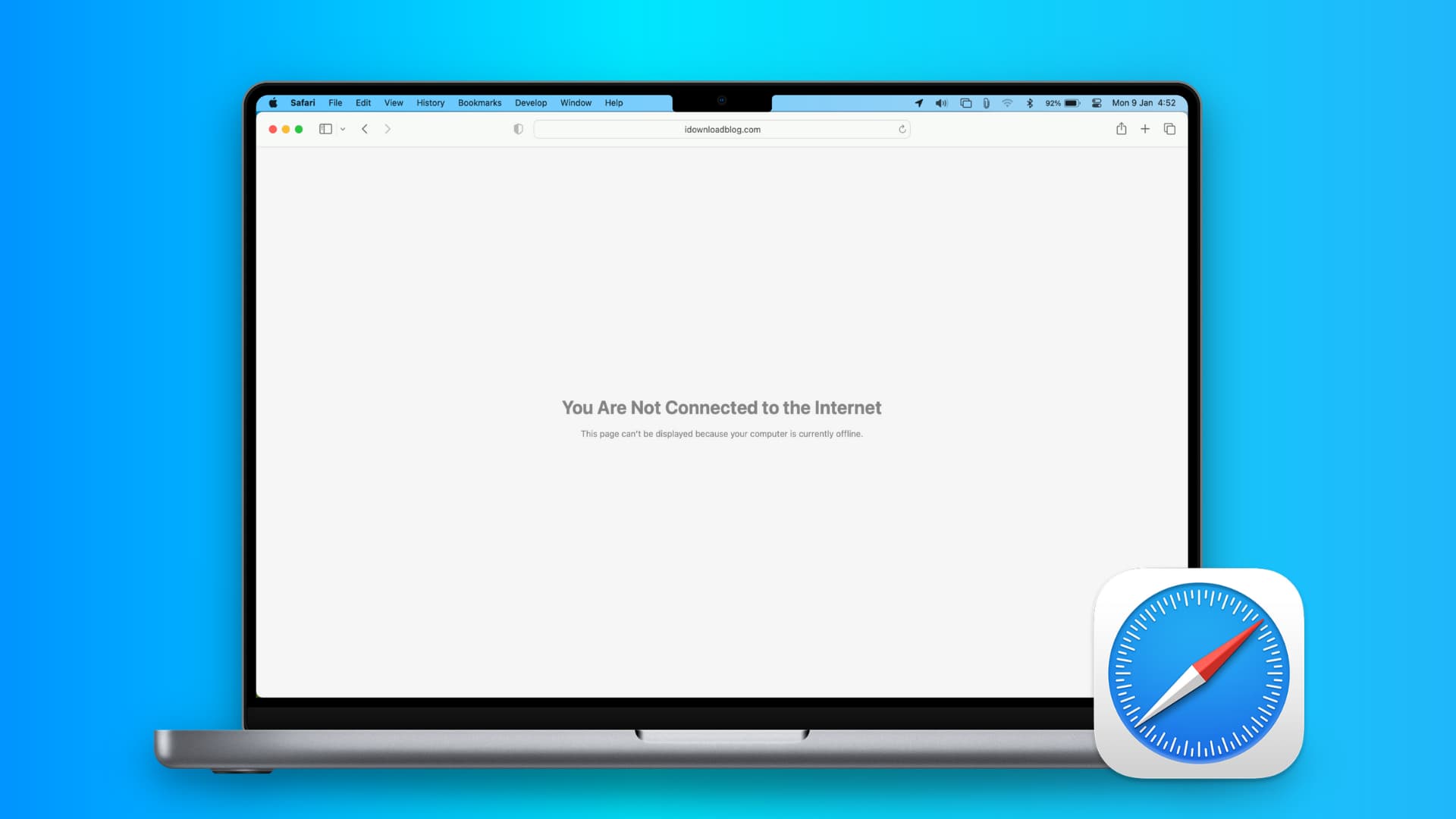Introduction
Resetting Safari on your Mac can be a helpful solution when you encounter issues such as slow performance, unexpected crashes, or unresponsive web pages. By resetting Safari, you can clear out accumulated data, remove problematic extensions, and restore the browser to its default settings. This process can effectively resolve various browsing issues and enhance the overall performance of Safari.
Whether you're experiencing frequent crashes, encountering persistent pop-up ads, or noticing unusual behavior while browsing, resetting Safari can often provide a fresh start and resolve these issues. It's important to note that resetting Safari will clear your browsing history, cookies, and other website data, so it's essential to back up any important information before proceeding with the reset.
In this guide, we'll walk you through the step-by-step process of resetting Safari on your Mac. By following these instructions, you can effectively troubleshoot common browsing issues and ensure that Safari functions smoothly and efficiently. Let's dive into the details and learn how to reset Safari to optimize your browsing experience.
Step 1: Open Safari Preferences
To initiate the process of resetting Safari on your Mac, the first step is to access the Safari Preferences. This can be done by launching the Safari browser and locating the "Safari" option in the top menu bar. Upon clicking on "Safari," a drop-down menu will appear, and you should select "Preferences" from the list. Alternatively, you can use the keyboard shortcut "Command + ," to directly open the Preferences window.
Upon accessing the Preferences window, you will be presented with a range of customizable settings and options for Safari. This is where you can modify various aspects of the browser, including privacy settings, security preferences, and extensions. The Preferences window is a central hub for managing Safari's behavior and appearance, making it a crucial starting point for the process of resetting the browser.
Once you have opened the Preferences window, you are ready to proceed to the next step in the process of resetting Safari. This initial step sets the stage for the subsequent actions that will ultimately lead to a refreshed and optimized browsing experience. By accessing the Preferences window, you gain access to the underlying settings and configurations that govern Safari's functionality, allowing you to make informed adjustments to enhance the browser's performance.
In the following steps, we will delve deeper into the process of resetting Safari, leveraging the options and tools available within the Preferences window to ensure a comprehensive and effective reset. By navigating through the Preferences window and making the necessary adjustments, you can pave the way for a smoother and more efficient browsing experience with Safari on your Mac.
With the first step completed, you are now prepared to move on to the subsequent stages of the reset process, each of which plays a pivotal role in restoring Safari to its default state. As we progress through the remaining steps, you will gain a deeper understanding of the intricacies involved in resetting Safari and optimizing its performance for seamless browsing.
Next, we will explore the second step in the process, which involves navigating to the Advanced tab within the Safari Preferences window. This step is essential for enabling additional options that are instrumental in the comprehensive reset of Safari on your Mac. Let's continue our journey toward resetting Safari and revitalizing your browsing experience.
Step 2: Choose the Advanced Tab
After accessing the Safari Preferences window, the next crucial step in the process of resetting Safari on your Mac is to navigate to the Advanced tab. This tab houses a range of advanced settings and options that are integral to the comprehensive reset of the browser.
Upon entering the Advanced tab within the Safari Preferences window, you gain access to a plethora of advanced configurations that govern the behavior and functionality of the browser. These settings delve into the intricacies of Safari's operations, allowing for fine-tuned adjustments that can significantly impact the browsing experience.
One of the key features within the Advanced tab is the option to enable the Develop menu. This menu provides access to a variety of developer-oriented tools and functionalities that are typically hidden from the standard Safari interface. By enabling the Develop menu, you unlock a suite of powerful tools that can aid in troubleshooting and optimizing the browser's performance.
Enabling the Develop menu is essential for the subsequent steps in the reset process, as it grants access to critical options that facilitate the comprehensive restoration of Safari to its default state. These options include the ability to clear caches, disable extensions, and reset various aspects of the browser that may be contributing to performance issues.
In addition to enabling the Develop menu, the Advanced tab also offers the option to manage website data. This feature allows you to view and remove specific data stored by websites, including cookies, cached files, and other site-specific information. By managing website data, you can effectively clear out accumulated browsing data that may be impacting Safari's performance.
Furthermore, the Advanced tab provides access to a range of other advanced settings, such as those related to security, privacy, and website permissions. These settings offer granular control over how Safari interacts with websites and handles various types of content, empowering you to tailor the browser's behavior to align with your preferences and security requirements.
By choosing the Advanced tab within the Safari Preferences window, you position yourself to leverage the advanced configurations and options that are pivotal to the comprehensive reset of Safari on your Mac. This step sets the stage for the subsequent actions that will ultimately lead to a refreshed and optimized browsing experience, ensuring that Safari functions smoothly and efficiently.
With the Advanced tab explored and its significance in the reset process elucidated, you are now prepared to proceed to the next step, where you will enable the Develop menu and unlock a suite of powerful tools that will aid in the comprehensive restoration of Safari. Let's continue our journey toward resetting Safari and revitalizing your browsing experience.
Step 3: Enable the Develop Menu
Enabling the Develop menu within Safari is a pivotal step in the process of resetting the browser on your Mac. The Develop menu unlocks a suite of powerful tools and functionalities that are instrumental in troubleshooting, optimizing, and customizing the browsing experience. By enabling this menu, you gain access to a range of developer-oriented features that are typically hidden from the standard Safari interface, empowering you to delve into the inner workings of the browser and make informed adjustments to enhance its performance.
To enable the Develop menu, you will navigate to the Advanced tab within the Safari Preferences window, as outlined in the previous step. Once in the Advanced tab, you will find the option to "Show Develop menu in menu bar." By checking this option, you effectively enable the Develop menu, causing it to appear in the Safari menu bar alongside other standard options.
The Develop menu offers a wealth of tools and functionalities that cater to developers, power users, and individuals seeking to optimize their browsing experience. One of the key features within the Develop menu is the ability to access the Web Inspector, a powerful tool that allows you to inspect, debug, and modify the structure and behavior of web pages. The Web Inspector provides invaluable insights into the underlying code and elements of web pages, enabling you to diagnose issues, optimize performance, and customize the display of content.
In addition to the Web Inspector, the Develop menu grants access to options for disabling caches, disabling extensions, and resetting various aspects of the browser. These options are instrumental in the comprehensive reset of Safari, as they allow you to clear out accumulated data, remove problematic extensions, and restore the browser to its default settings. By leveraging the functionalities within the Develop menu, you can effectively troubleshoot common browsing issues and ensure that Safari functions smoothly and efficiently.
Enabling the Develop menu within Safari empowers you to harness the full potential of the browser, providing access to advanced tools and functionalities that are essential for the comprehensive reset and optimization of Safari on your Mac. By enabling this menu, you position yourself to leverage a suite of powerful features that can aid in troubleshooting, customizing, and enhancing the browsing experience, ultimately leading to a refreshed and optimized Safari browser.
With the Develop menu enabled, you are now prepared to proceed to the next step in the reset process, where you will utilize the functionalities within the Develop menu to initiate the comprehensive reset of Safari on your Mac. Let's continue our journey toward resetting Safari and revitalizing your browsing experience.
Step 4: Reset Safari
Resetting Safari on your Mac involves a series of critical actions that collectively restore the browser to its default state, effectively clearing out accumulated data, removing problematic extensions, and optimizing its performance. This process is instrumental in troubleshooting common browsing issues and ensuring that Safari functions smoothly and efficiently. By following the steps outlined below, you can initiate the comprehensive reset of Safari and revitalize your browsing experience.
Clear Browsing History and Data
The first step in resetting Safari involves clearing the browsing history and data. This action effectively removes the record of websites visited, searches conducted, and other browsing activities. To accomplish this, you will navigate to the "History" menu in the Safari menu bar and select "Clear History." Upon doing so, a window will appear, allowing you to choose the time range for which you wish to clear the history. Selecting "Clear History" will remove the specified browsing history, contributing to the comprehensive reset of Safari.
Remove Website Data and Cookies
In addition to clearing the browsing history, it is essential to remove website data and cookies to further optimize Safari. This action involves accessing the "Privacy" tab within the Safari Preferences window and clicking on "Manage Website Data." Here, you can view and remove specific data stored by websites, including cookies and cached files. By removing this data, you effectively clear out accumulated browsing data that may be impacting Safari's performance, contributing to the comprehensive reset of the browser.
Disable Extensions and Plug-Ins
Another critical step in resetting Safari is to disable extensions and plug-ins that may be contributing to browsing issues. This action involves accessing the "Extensions" tab within the Safari Preferences window and unchecking the boxes next to each installed extension. Additionally, you can navigate to the "Security" tab to manage website plug-ins and disable any that may be causing issues. By disabling extensions and plug-ins, you eliminate potential sources of browsing problems, paving the way for a refreshed and optimized browsing experience.
Reset Safari Settings
The final step in the reset process involves resetting Safari's settings to their default configurations. This action is carried out by navigating to the "General" tab within the Safari Preferences window and clicking on "Reset Safari." A window will appear, allowing you to choose which settings to reset, including clearing the cache, removing cookies, and resetting the top sites. By selecting the desired options and proceeding with the reset, you effectively restore Safari to its default state, resolving common browsing issues and optimizing its performance.
By following these steps to reset Safari on your Mac, you can effectively troubleshoot common browsing issues and ensure that the browser functions smoothly and efficiently. This comprehensive reset clears out accumulated data, removes problematic extensions, and restores Safari to its default settings, ultimately revitalizing your browsing experience and enhancing the overall performance of the browser.
Conclusion
In conclusion, resetting Safari on your Mac is a valuable troubleshooting technique that can effectively address a range of browsing issues and optimize the performance of the browser. By following the step-by-step process outlined in this guide, you can initiate a comprehensive reset that clears out accumulated data, removes problematic extensions, and restores Safari to its default settings, ultimately revitalizing your browsing experience.
Through the process of resetting Safari, you gain the ability to clear browsing history and data, remove website data and cookies, disable extensions and plug-ins, and reset Safari's settings to their default configurations. These actions collectively contribute to the restoration of Safari to a pristine state, free from the clutter and issues that may have been impacting its performance.
Upon completing the reset process, you can expect to experience a smoother and more efficient browsing experience with Safari. The removal of accumulated data and cookies, coupled with the disabling of problematic extensions and the restoration of default settings, can lead to improved stability, faster page loading times, and a more responsive browsing interface.
Furthermore, the ability to access the Develop menu and leverage advanced tools within Safari empowers you to take control of the browser's behavior and optimize its performance according to your preferences. This level of customization and fine-tuning ensures that Safari aligns with your specific browsing needs, providing a tailored and optimized experience.
It's important to note that resetting Safari will clear your browsing history, cookies, and other website data, so it's essential to back up any important information before proceeding with the reset. Additionally, after completing the reset, you may need to reconfigure certain preferences and re-enable desired extensions to tailor Safari to your specific requirements.
By incorporating the insights and techniques presented in this guide, you are equipped to effectively troubleshoot common browsing issues and ensure that Safari functions smoothly and efficiently. The comprehensive reset process enables you to revitalize your browsing experience, setting the stage for seamless and enjoyable interactions with the Safari browser on your Mac.
In essence, resetting Safari serves as a valuable maintenance practice, allowing you to refresh the browser and optimize its performance, ultimately enhancing your overall browsing experience and productivity. Embracing the process of resetting Safari empowers you to take proactive steps in maintaining a smooth and efficient browsing environment, ensuring that Safari remains a reliable and effective tool for accessing the web on your Mac.

























